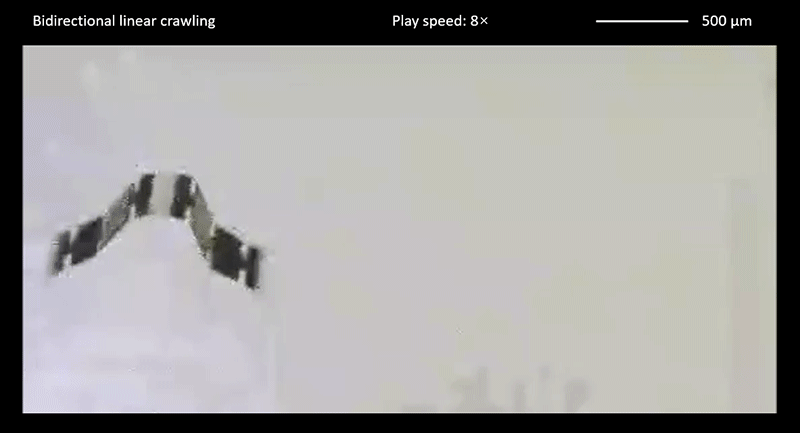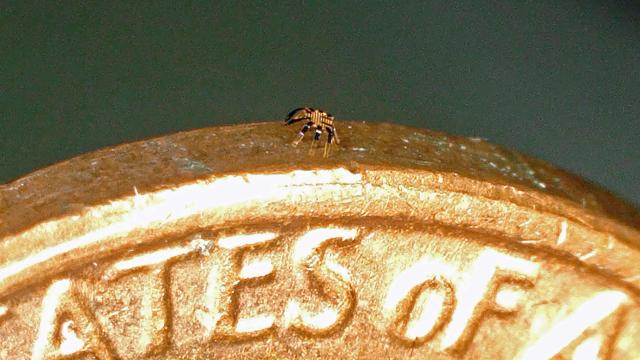With all the doom and gloom over the inevitable robot apocalypse, we’ve at least been able to take solace in the fact that we’ll see them coming — until today. Researchers from Northwestern University have foolishly succeeded in building a remote control robot crab that’s so tiny it can crawl along the edge of a penny.
Making tiny robots is far from a new idea: nanobots have been popular in science fiction for decades, and researchers around the world have already successfully created microscopically small robots that can navigate inside living creatures, either for exploratory purposes, or for delivering drugs to specific parts of the anatomy.
But those robots are often designed to swim or simply drift through the liquids already moving through a body’s circulatory system. What the researchers at Northwestern University have accomplished, as detailed in a paper published in the Science Robotics journal yesterday, is building a robot that can be remotely steered without wires or a physical connection and that scampers around on either a set of legs or other, more unorthodox forms of locomotion.
The robot crab the researchers created measures just half a millimetre wide, or roughly 0.02-inches across, and can move at a speed of about half of its body length every second. Unsurprisingly, it’s no speed demon, but like a tick that’s hopped on to your body during a hike in the woods, one of its biggest advantages is that it can move about without being detected, as it is both so small and incredibly lightweight.
So how did the researchers find batteries, servos, and other electronics small enough to squeeze onto the half-millimetre crab? They didn’t. It uses a completely different approach to movement than complex multi-legged robots like Boston Dynamics’ Spot. The crab is created from a shape-memory alloy that is deformed by a thin coating of glass applied during the manufacturing process, but returns to its original starting shape when heat is applied. So imagine your arm is bent, but instead of muscles, simply pointing a hair dryer at it causes it to straighten out. When it cools down afterwards, it bends once again.

In this case, a precise laser beam is used to heat specific points on the robot crab’s body in specific sequences, and as its various parts deform and bend back again as it’s heated and cooled, the researchers are able to make it locomote from point A to point B, plus turn and jump as well. It’s not quite as dextrous or agile as the dog-like robot Spot, which can deftly climb stairs and scamper over rough terrain, but Spot also can’t crawl inside a tiny crack in a wall, or into someone’s ear. (A truly nightmarish potential use of this tech.)

A tiny crab was just one form these micro-robots could take. The researchers also built similarly-sized bots that emulate the movements of inchworms, beetles, and crickets, but entirely different forms could be manufactured too, based on the environment where they would be operated. Moving across a beach, for example, would be much easier with repeated jumping motions, as at this scale those grains of sand wouldn’t be so tiny.
